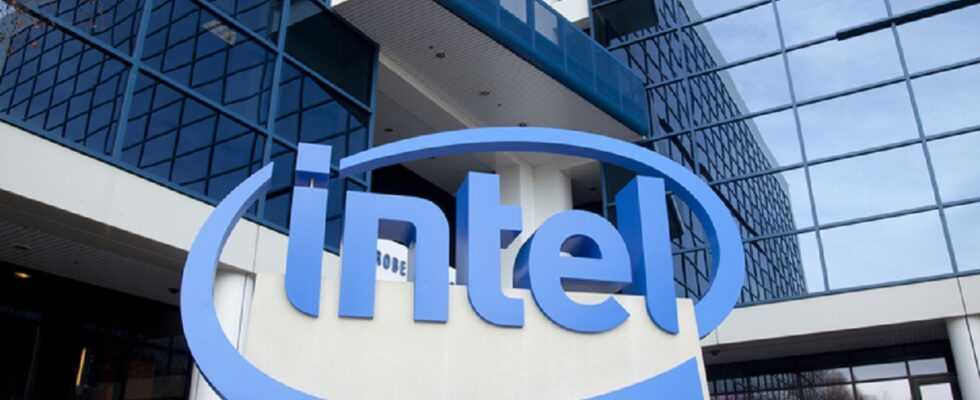The market was waiting for it: Intel has finally presented its new line of ARC graphics processing units (GPUs) for laptops. This line will include three versions: an ARC 3 GPU (already available) and two other processors, the ARC 5 and ARC 7, which are scheduled for delivery in early summer 2022.
These two models will also include two sub-variants each. To face competition from AMD and – especially – Nvidia, the American giant has integrated several new technologies and protocols into these chips, in order to provide faster graphics processing throughput and lower power consumption compared to the previous models. Either way, with support for technologies like ray tracing and DirectX XII, the company is clearly positioning the ARC line as direct competition to the best laptop solutions from Nvidia and AMD.
Intel also said that ARC’s built-in Xe media engine technology can decode 8K60 12-bit HDR video and encode 8K 10-bit HDR files through VP9, AVC, HEVC and AV1 codecs. The latest codec, AV1, will have exceptional support through hardware acceleration, which Intel claims will deliver 50x faster acceleration in supported software. Supported software at launch will be FFMPEG, Handbrake, Adobe Premiere Pro, DaVinci Resolve, and XSplit. All indications that illustrate Intel’s ambition to appeal to the video editor crowd, although gaming remains the primary focus of the ARC series. To that end, Intel notes that the chipset will support HDMI 2.0b and DisplayPort 1.4a while being “DisplayPort 2.0 10G ready”.
These versatile video output options will support two new forms of video synchronization technology. The first, “Speed Sync”, will accelerate the most recent frame on demand to reduce frame tearing without introducing the extra video latency that some other adaptive sync solutions can cause. For those who prefer a fixed refresh rate, Intel is also introducing “Smooth Sync”, a protocol that does not prevent screen tearing, but rather blurs the sharp distinctions it causes to make it much less noticeable when It happens.
SoCs mainly geared towards gaming
Intel’s ARC technology will be available on several chipsets, including two A-series SoCs (Systems on Chips): the ACM-G11 and ACM-G10. The ARC 3 will be available in two variants: A350M and A370M. Both versions are available immediately on select laptops. With this ARC 3 range, Intel – hitherto little known for its GPUs dedicated to laptops – aims to address players looking for 1080p resolutions and refresh rates of 60 frames per second. The company claims to have already achieved such performance on well-known titles like Doom Eternal, Age of Empires IV, Destiny 2 Where Final Fantasy XIV.
However, the American giant also praises the performance of the A370M, slightly more upscale, which would be capable of reaching up to 115 FPS in light and competitive games like Valorant and maintain a slightly lower 94 FPS on a game like Fortnite. The company hasn’t released similar comparisons for its ARC 5 or ARC 7 models, which have yet to be launched.
The ARC lineup will feature multiple “Deep Link” technologies to balance its video processing prowess and power consumption. And to tout the new “Dynamic Power Share” protocol which will attempt to optimize workloads by shifting the distribution of power between CPUs and GPUs for minimal power consumption. Or the “Hyper Encode” technique which uses all the media encoding engines available on the laptop’s CPU and GPU to speed up media encoding. Finally, Intel also cites the “Hyper Compute” technology, which uses all available calculation engines or artificial intelligence accelerators in the same way to accelerate media creation.
Towards ARC GPUs for desktop computers?
The chipmaker has detailed several “Deep Link” technologies that it plans to integrate into the ARC lineup to balance its video processing prowess and power consumption. These include a new “Dynamic Power Share” protocol that will attempt to optimize workloads by shifting the distribution of power between CPUs and GPUs for minimal power consumption; a “Hyper Encode” technique that uses all media encoding engines available on the laptop’s CPU and GPU to speed up media encoding; and “Hyper Compute”, which similarly uses all available compute engines or artificial intelligence accelerators to accelerate media creation.
Intel’s first ARC 3 model to hit the market is expected to be part of Samsung’s new Galaxy Book 2 Pro, an “ultra-thin and light” laptop available now. Intel has also signed deals to bring the ARC line to several other major manufacturer brands, including Dell, Lenovo, MSI, Asus, Acer, and several others.
All of these models will feature Intel’s new ARC Control software, the American giant’s revamped approach to driver management and hardware optimization in an application. The software runs in an integrated overlay that is accessible anytime, even in games. It provides access to game driver updates (which are done entirely within the application), performance optimization, a creation studio for streamers, the user’s game library.
As for the ARC 5 and ARC 7 GPUs, Intel indicates that their launch is close, without providing further details. During the presentation of this new line of graphics processors, the American giant indicated that it wanted to apply its ARC technology to desktop systems. Enough to compete head-on with Nvidia and AMD, which have shared the market for several years already. However, no timetable has been communicated for when we could see ARC technology on an integrated desktop card.
Source: ZDNet.com
